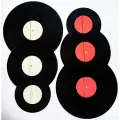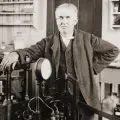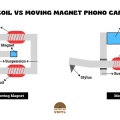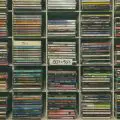To track the history of records and to answer ‘when were record players popular’ is to track the throbbing veins of the history of the recording industry itself. Many would purport that, arguably, this is one of the most important inventions in the history of the recording industry. It at least seems nonsensical to deny its importance in the history of home entertainment.
This is an invention, a piece of technology, that brought the sounds that music enthusiasts heard at concert halls into the home, placing a new and previously unthinkable autonomy into their hands for the first time. Try explaining such a concept to a music enthusiast from days gone by in years of yore and you will be laughed out of the tavern, or even burnt at the stake for colluding talk of witchcraft.
Yet here we are, in a time where this is not only a reality, but where this reality has been rapidly superseded by new, faster, better technological advancements that claim to do its job but better. This new vinyl boom surely says otherwise, or at the very least it says that there are things that these new advancements, for all their shine and gleaming pomposity, simply cannot do.
Table of Contents
- Beginning at the Beginning
- On Edison
- Along Comes Emile
- Commercial Ruins
- The Golden Age of Record Players
- Final Tones
- FAQs When Were Record Players Popular
Beginning at the Beginning
In order to answer the question ‘when were record players popular’, we must, of course, begin at the very beginning. The story, thus, begins with an invention by the French bookseller and inventor Edouard-Leon Scott de Martinville, the phonoautograph. This is the earliest known sound recording device (ever!), patented in France on the 25th March 1857. Despite the cultural and historical significance of this moment, he died around two decades later in 1879 with little to no recognition.
It must be stressed, however, that this invention did not record sound as sound necessarily. Instead, it transcribed vibrations in the air into a visual pattern for study afterward, transcribing sound waves as undulations or other deviations in a line traced on smoke-blackened paper or glass.
This was initially intended solely as a laboratory instrument for the study of acoustics, for it could be used to visually study and measure the amplitude envelopes and waveforms of speech and other sounds or to determine the frequency of a given musical pitch by comparison with a simultaneously recorded reference frequency.
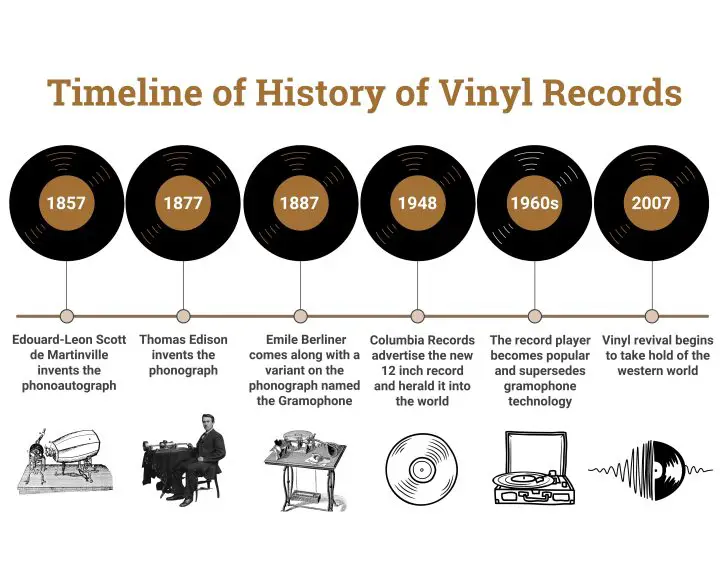
In any case, no one at the time thought to use this invention to reproduce the recorded as sound, especially bizarre seeing as they contained enough information about the sound that it could, in theory, be used to recreate it, though this would have been impossible in any case.
However, several phonautograph recordings from before 1861 were successfully played as sound in 2008 by optically scanning them and using a computer to process the scans into digital audio files. The recording was converted from ‘squiggles on paper’ to a playable digital audio file with the IRENE technology, developed by scientists at the Lawrence Berkeley National Laboratory in Berkeley, California.
It is now the earliest known recording of singing in existence, predating, by 28 years, several 1888 Edison wax cylinder phonograph recordings of a massed chorus performing Handel’s oratorio Israel in Egypt.
On Edison
Edison himself was a vital player in the history of recording technology, an essential passage to travel in answering ‘when were record players popular’. He invented the phonograph in 1877, bringing us record players as we know them today. If you own a record player yourself, then chances are that it will be directly inspired in design and aesthetic appearance by this early model from the latter end of the 19th century.
Initially invented as a device to record sound onto spinning tin foil wrapped along a cardboard cylinder, Edison quickly realised this device’s use in playing back this music, seeing its potential for the musical enjoyment of the masses. The device itself was initially conceived as a biproduct of his efforts to play back recorded telegraph messages and to automate speech sounds for transmission by telephone.
Upon releasing these ideas into the world, Alexander Graham Bell’s Volta Laboratory made several improvements to the design, including the use of a wax coating instead of the more flimsy and structurally unsound tinfoil, as well as a cutting stylus that moved from side to side in a zigzag groove around the record.
The use of a flat recording surface instead of a cylindrical one was an obvious alternative which French thought experimenter and poet Charles Cros initially favored and which practical experimenter Thomas Edison and others actually tested in the late 1870s and early 1880s.
The commercialization of sound recording technology had been initially aimed at use in business correspondences, such as transcription into writing of speech. With paper documents being the desired end product, the cylinders were considered ephemeral; need to archive large numbers of bulky, fragile sound recordings seemed unlikely, and the ease of producing multiple copies was not a consideration.
Along Comes Emile
In 1887, things took an even larger change, one that would alter forever the course of these events about when were record players popular. Emile Berliner, a German American inventor, comes along and decides that he has a thing or two to say and suggest about the hitherto widespread cylindrical medium of the phonograph.
He comes forth with a variant that he names the Gramophone. Berliner’s approach was essentially the same one proposed, but never implemented, by Charles Cros two decades prior in 1877. The diaphragm was linked to the recording stylus in a way that caused it to vibrate laterally from side to side as it traced a spiral onto a zinc disc very thinly coated with a compound of beeswax.
The zinc disc was then immersed in a bath of chromic acid which etched a groove into the disc where the stylus had removed the coating, after which the recording could be played. With some later improvements, the flat discs of Berliner could be produced in large quantities at much lower cost than the cylinders of Edison’s system.
Here was the true genesis of the record as we know it, the spinning discs etched with the details of our favorite sounds for playing back in our listening environment of choice. This was still some years before the medium would really hit its stride and become a popular fad among the cultural masses, but here it lay in all its glory even before it was embraced by a larger audience.
Both the cylindrical form and the disc form were used in listening parlors throughout America, of which there was at least one in every city at one point.
Commercial Ruins
Despite the invention being released to the masses around the turn of the 20th century, the medium still had plenty of peaks and troughs to trace before reaching its golden age. Berliner’s Gramophone and Edison’s phonograph were reasonably popular among those who were interested in such things, until radio came along of course.
Here was an invention which, for one initial asking price, brought you endless hours of entertainment for no extra cost and which sculpted your listening experience for you. Not only that, it guided one’s listening experience in such a way that it directed listeners and told them what they wanted to like. The newly invented phonograph scarcely stood a chance, expensive as it was, unwieldy as some could be, and pricey as it also was to keep buying new discs to play on the damn thing!
The radio by no means killed the record player but it certainly dampened its mojo and stole the spotlight for a considerable period of time, one in which it might otherwise have flourished, and one in which it might have steered the course of popular music history into altogether unforeseen and unknowable regions. When were record players popular? They might have been here, but they were not quite.
The Golden Age of Record Players
It was in the 1960s and the 1970s that record players really saw their golden age blooming. Popular as they are today and as they were among turntablists later in the century at the advent of hip-hop and such like, this was the first time they had really been able to show the world what they were made of. When were record players popular? Right now, that’s when!
The luxury market for the booming middle class saw to it that the turntable developed and was improved drastically during this period, a time when stereo playback was being offered for the first time. Many albums, such as The Beach Boys’ Pet Sounds, took a direct stand against such stereo technology, believing it to be unaligned with their production interests, so controversial was this now universal advancement at the time of its initial release.
Unlike the phonograph and the gramophone, this record player medium offered a considerably higher fidelity of playback, meaning that the record player could offer to the music industry something that the radio simply could not. This became incredibly popular in the 60s and 70s, matching the previous fervour for the radio, causing many to rush out and buy their own.
High-fidelity made great advances through the latter half of the sixties and seventies, with the rise in popularity of stereo records and separate turntables that were either direct driven or belt driven, though the latter, at least initially, would have been far more widespread, as technology sought to catch up.
The very nature of the medium meant that it allowed any who owned their own record player to listen to any records they owned as many times as they wished, back to back on repeat, something that simply could not be done through the radio. This, thus, offered the listener almost complete autonomy over their listening experience, provided they could afford the records they so desired.
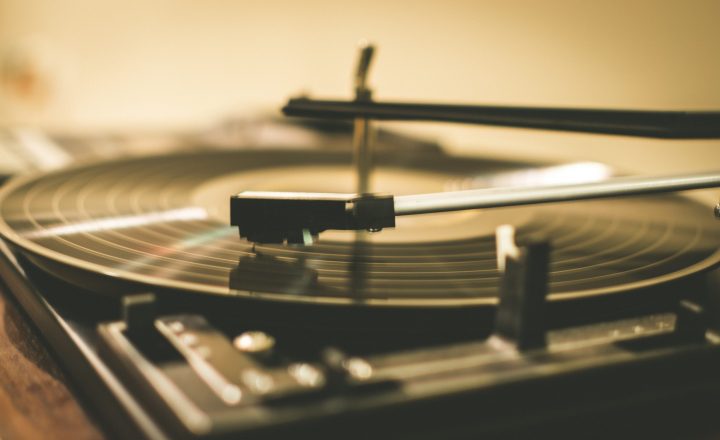
Final Tones
So, there it is, this compact though, we hope, comprehensive guide to the history of record players and an answer to the all-important and poignant question, ‘when were record players popular?’
We hope that you have enjoyed these peregrinations through history and that they have been of some use to you in solving some of your own burning personal questions on the topic, or perhaps they have opened up even more questions!
If so, do not be afraid to drop a comment down below with your question and details!
FAQs When Were Record Players Popular
When did record players stop being popular?
The initial moment record players stopped being the go to medium for musical reproduction would likely have been the advent of the Compact Disc in its place. The medium offered some serious advantages over the vinyl disc format, not limited to the streamlined size which boasted a similarly robust structural integrity without sacrificing some of what made record discs so popular and widely adored. Other mediums, such as the cassette, had existed in tandem with the vinyl record player and its corresponding discs, though had never wholly encroached on what it did best, offering relatively exceptional and desirable audio fidelity, warmth, and a reasonably portable way to deal with it.
Were record players used in the 50s?
Yes, absolutely, and during this time the 7 inch record format was actually rather popular in advertising, releasing and distributing music to the masses. This is precisely where the record disc and record players would have excelled in the 1950s, as mediums on which to store music for broadcast on radio stations for the consumption of the listening public and viewership. Home record players and stereo systems were not widespread or popular in the western world until around the early 60s at least, when technology caught up and rendered these things cheap enough for a wide enough audience to engage with them.
Did they have records in the 1920s?
Certainly, yes, though they were far from the phenomenon that they were in the 1970s or even that they are now after the vinyl boom of recent years. Just as the record disc and phonograph were beginning to take off early in the 20th century, the radio came along and dimmed its popularity and appeal, offering a wide range of programs and music to the listening public for a one off fee, as opposed to the record player, which you had to stock yourself with your own discs. This, alongside the great depression and Wall Street crash in 1929, kicked the growth of the phonograph as a medium firmly in the shin.
Were record players used in the 70s?
You bet they were! It was in the 1960s and the 1970s that record players really saw their golden age blooming. Popular as they are today and as they were among turntablists later in the century at the advent of hip hop and such like, this was the first time they had really been able to show the world what they were made of. When were record players popular? Right now, that’s when!


